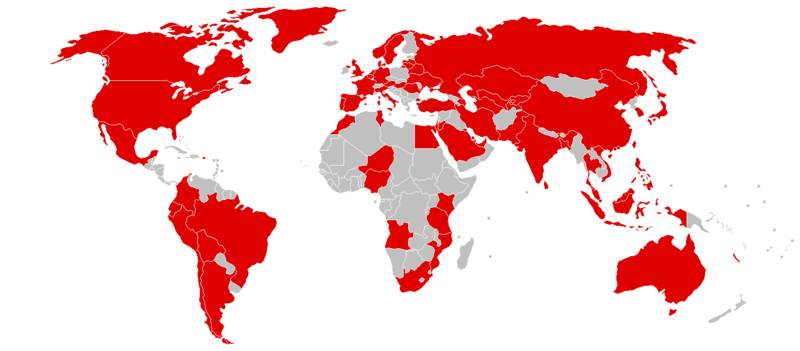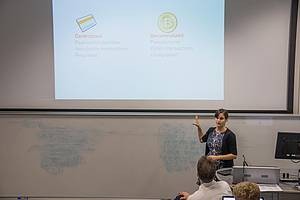
This week, the Wall Street Journal published an article by Robert McMillan containing an apology from Bill Burr, a man whose name is unknown to most but whose work has caused daily frustration and wasted time for probably hundreds of millions of people for nearly 15 years. Burr is the author of the 2003 Special Publication 800-63. Appendix A from the US National Institute of Standards and Technology: eight pages that advised security administrators to require complex passwords including special characters, capital letters, and numbers, and dictate that they should be frequently changed.
“Much of what I did I now regret,” Burr told the Journal. In June, when NIST issued a completely rewritten document, it largely followed the same lines as the NCSCs password guidance, published in 2015 and based on prior research and collaboration with the UK Research Institute in Science of Cyber Security (RISCS), led from UCL by Professor Angela Sasse. Yet even in 2003 there was evidence that Burr’s approach was the wrong one: in 1999, Sasse did the first work pointing out the user-unfriendliness of standard password policies in the paper Users Are Not the Enemy, written with Anne Adams.
How much did that error cost in lost productivity and user frustration? Why did it take the security industry and research community 15 years to listen to users and admit that the password policies they were pushing were not only wrong but actively harmful, inflicting pain on millions of users and costing organisations huge sums in lost productivity and administration? How many other badly designed security measures are still out there, the cyber equivalent of traffic congestion and causing the same scale of damage?
For decades, every password breach has led to the same response, which Einstein would readily have recognised as insanity: ridiculing users for using weak passwords, creating policies that were even more difficult to follow, and calling users “stupid” for devising coping strategies to manage the burden. As Sasse, Brostoff, and Weirich wrote in 2001 in their paper Transforming the ‘Weakest Link’, “…simply blaming users will not lead to more effective security systems”. In his 2009 paper So Long, and No Thanks for the Externalities, Cormac Herley (Microsoft Research) pointed out that it’s often quite rational for users to reject security advice that ignores the indirect costs of the effort required to implement it: “It makes little sense to burden all users with a daily task to spare 0.01% of them a modest annual pain,” he wrote.
When GCHQ introduced the new password guidance, NCSC head Ciaran Martin noted the cognitive impossibility of following older policies, which he compared to trying to memorise a new 600-digit number every month. Part of the basis for Martin’s comments is found in more of Herley’s research. In Password Portfolios and the Finite-Effort User, Herley, Dinei Florencio, and Paul C. van Oorschot found that the cognitive load of managing 100 passwords while following the standard advice to use a unique random string for every password is equivalent to memorising 1,361 places of pi or the ordering of 17 packs of cards – a cognitive impossibility. “No one does this”, Herley said in presenting his research at a RISCS meeting in 2014.
The first of the three questions we started with may be the easiest to answer. Sasse’s research has found that in numerous organisations each staff member may spend as much as 30 minutes a day on entering, creating, and recovering passwords, all of it lost productivity. The US company Imprivata claims its system can save clinicians up to 45 minutes per day just in authentication; in that use case, the wasted time represents not just lost profit but potentially lost lives.
Add the cost of disruption. In a 2014 NIST diary study, Sasse, with Michelle Steves, Dana Chisnell, Kat Krol, Mary Theofanos, and Hannah Wald, found that up to 40% of the time leading up to the “friction point” – that is, the interruption for authentication – is spent redoing the primary task before users can find their place and resume work. The study’s participants recorded on average 23 authentication events over the 24-hour period covered by the study, and in interviews they indicated their frustration with the number, frequency, and cognitive load of these tasks, which the study’s authors dubbed “authentication fatigue”. Dana Chisnell has summarised this study in a video clip.
The NIST study identified a more subtle, hidden opportunity cost of this disruption: staff reorganise their primary tasks to minimise exposure to authentication, typically by batching the tasks that require it. This is a similar strategy to deciding to confine dealing with phone calls to certain times of day, and it has similar consequences. While it optimises that particular staff member’s time, it delays any dependent business process that is designed in the expectation of a continuous flow from primary tasks. Batching delays result not only in extra costs, but may lose customers, since slow responses may cause them to go elsewhere. In addition, staff reported not pursuing ideas for improvement or innovation because they couldn’t face the necessary discussions with security staff.
Unworkable security induces staff to circumvent it and make errors – which in turn lead to breaches, which have their own financial and reputational costs. Less obvious is the cost of lost staff goodwill for organisations that rely on free overtime – such as US government departments and agencies. The NIST study showed that this goodwill is dropping: staff log in less frequently from home, and some had even returned their agency-approved laptops and were refusing to log in from home or while travelling.
It could all have been so different as the web grew up over the last 20 years or so, because the problems and costs of password policies are not new or newly discovered. Sasse’s original 1999 research study was not requested by security administrators but by BT’s accountants, who balked when the help desk costs of password problems were tripling every year with no end in sight. Yet security people have continued to insist that users must adapt to their requirements instead of the other way around, even when the basis for their ideas is shown to be long out of date. For example, in a 2006 blog posting Purdue University professor Gene Spafford explained that the “best practice” (which he calls “infosec folk wisdom”) of regular password changes came from non-networked military mainframes in the 1970s – a far cry from today’s conditions.
Herley lists numerous other security technologies that are as much of a plague as old-style password practices: certificate error warnings, all of which are false positives; security warnings generally; and ambiguous and non-actionable advice, such as advising users not to click on “suspicious” links or attachments or “never” reusing passwords across accounts.
All of these are either not actionable, or just too difficult to put into practice, and the struggle to eliminate them has yet to bear fruit. Must this same story continue for another 20 years?
This article also appears on the Research Institute in Science of Cyber Security (RISCS) blog.

 As a child,
As a child,